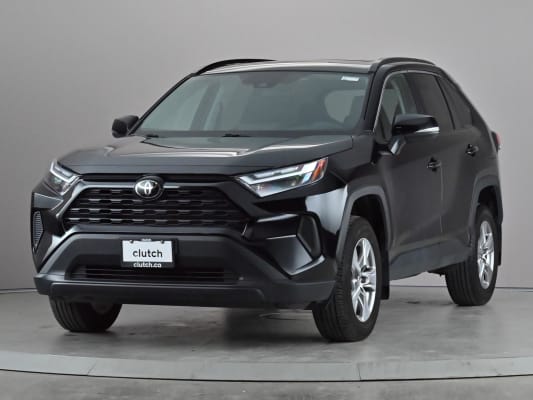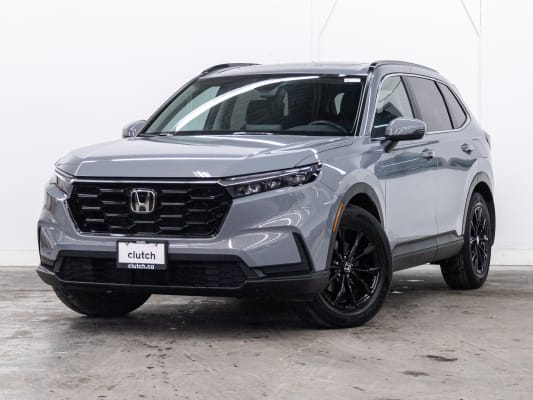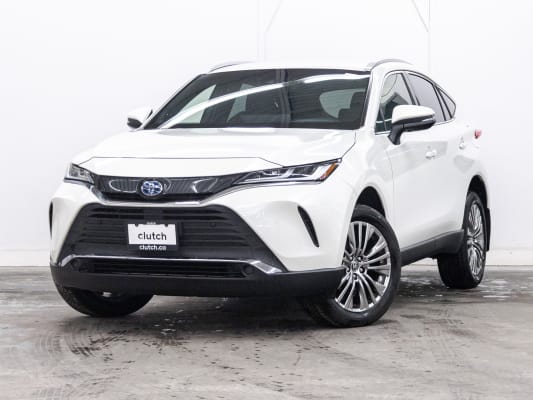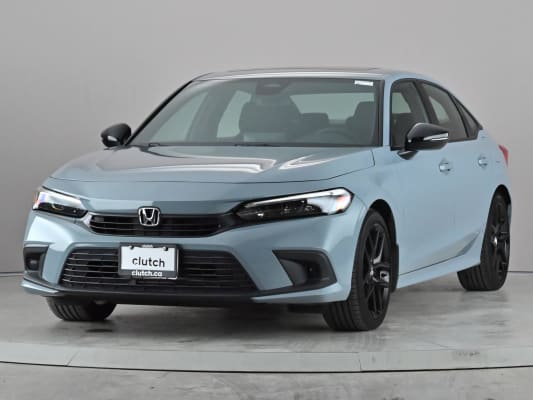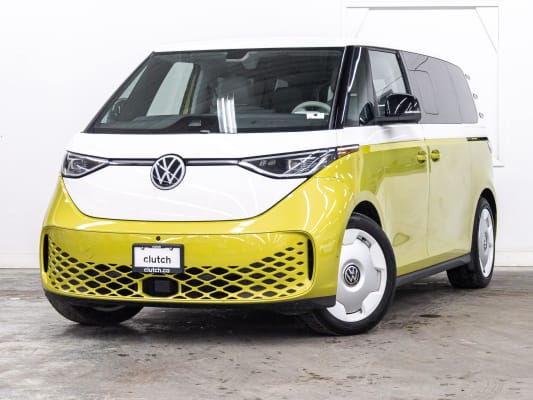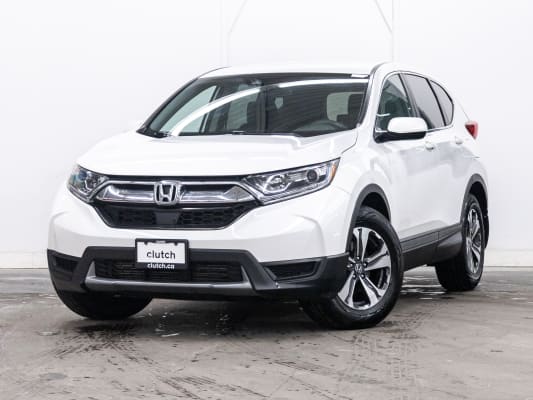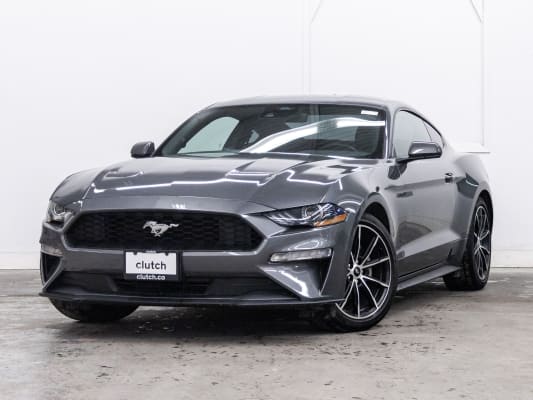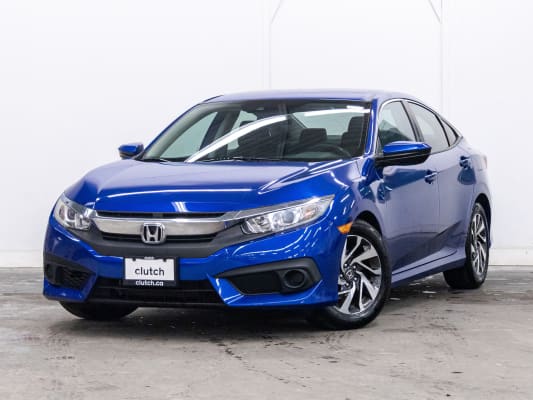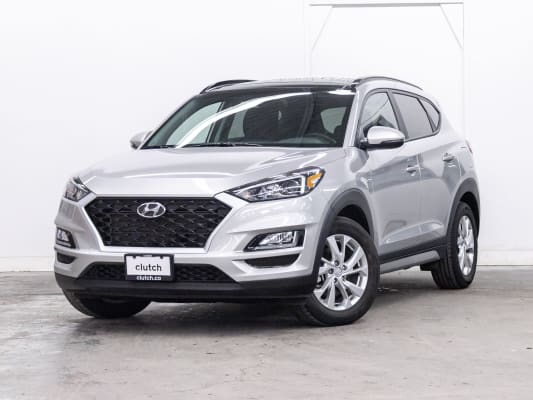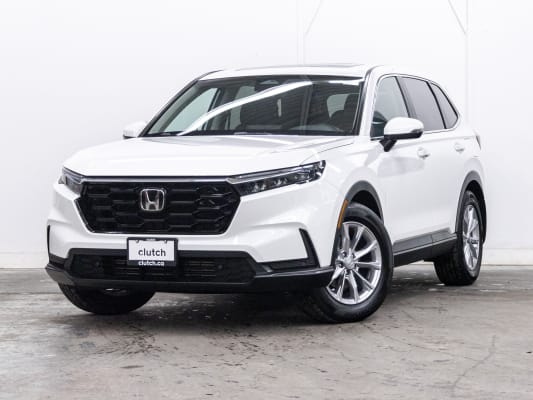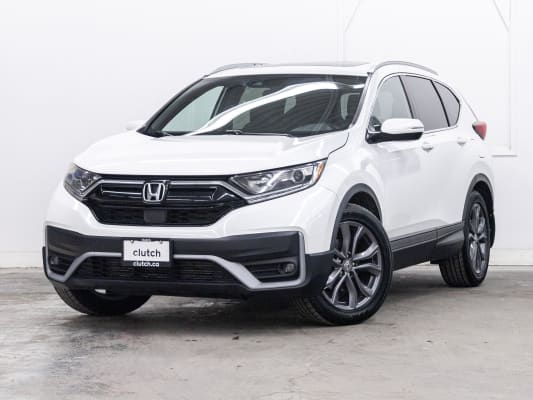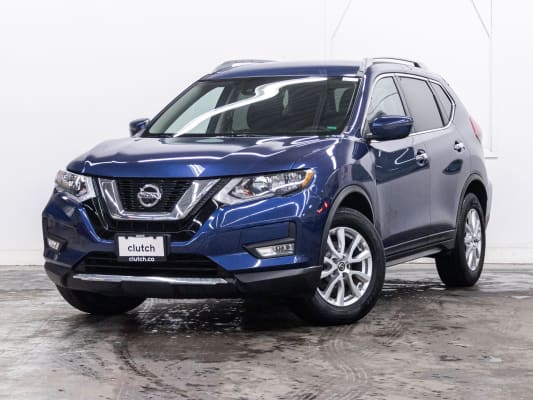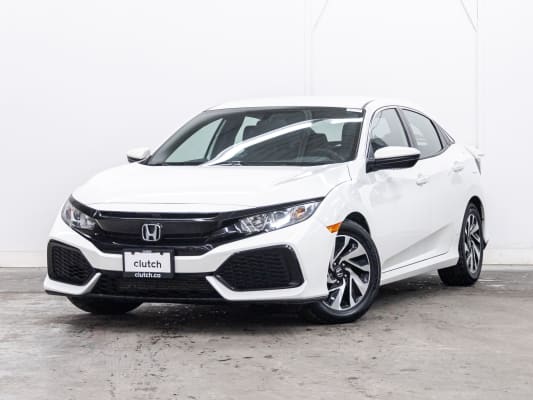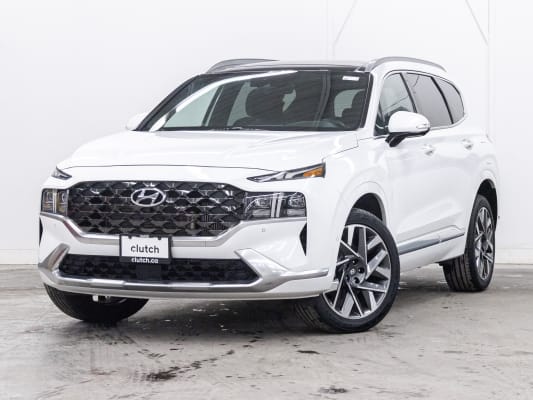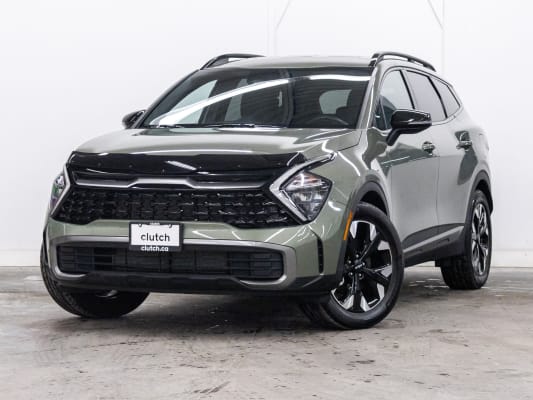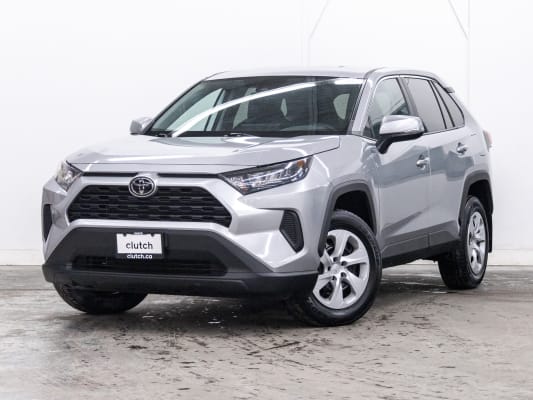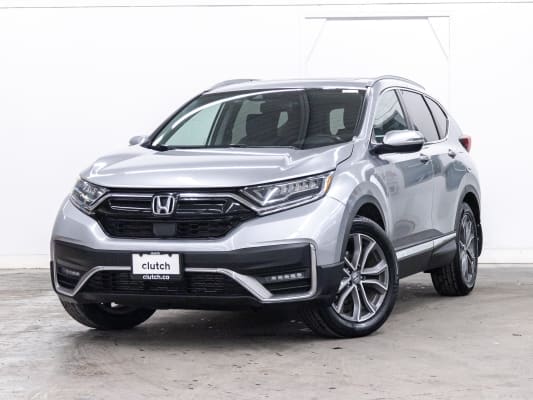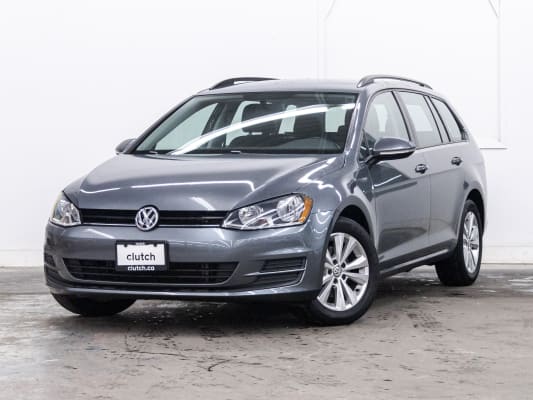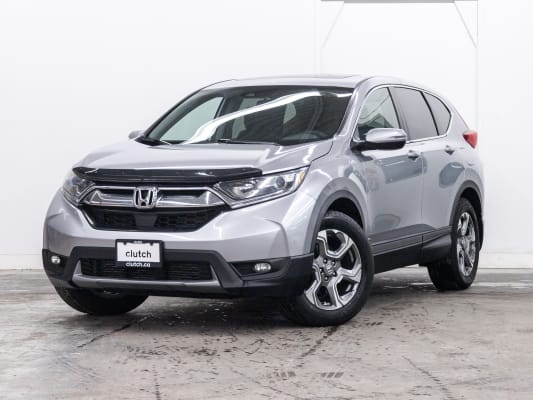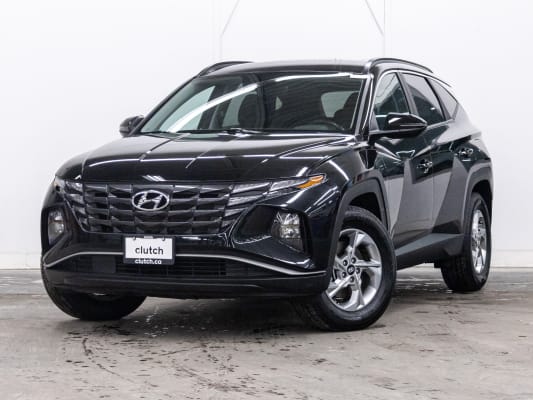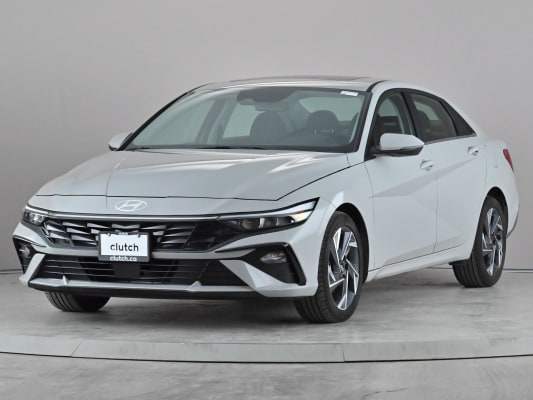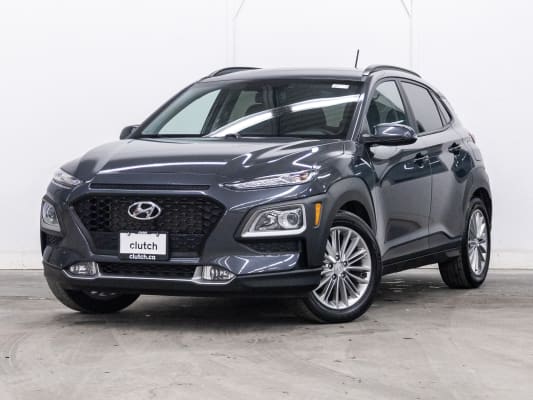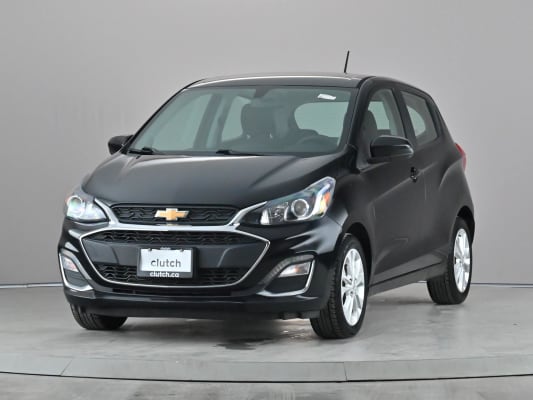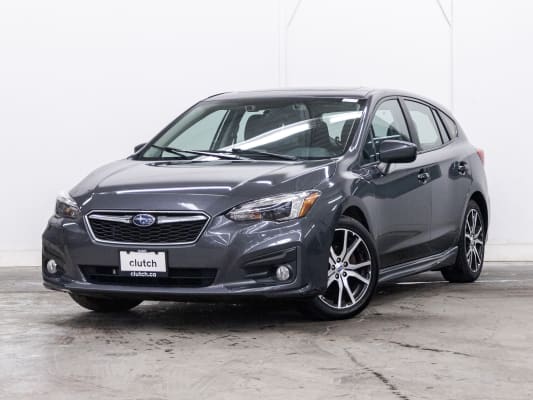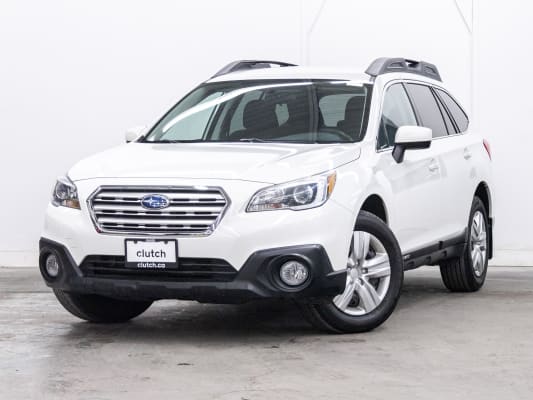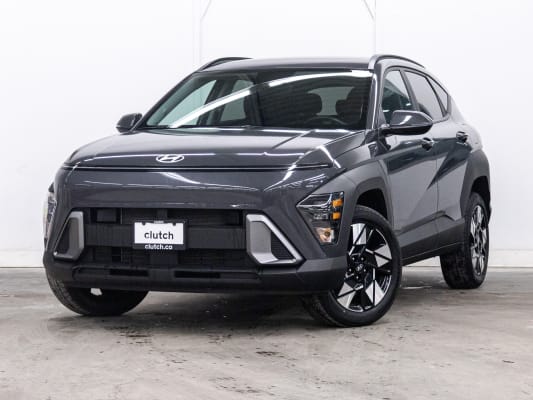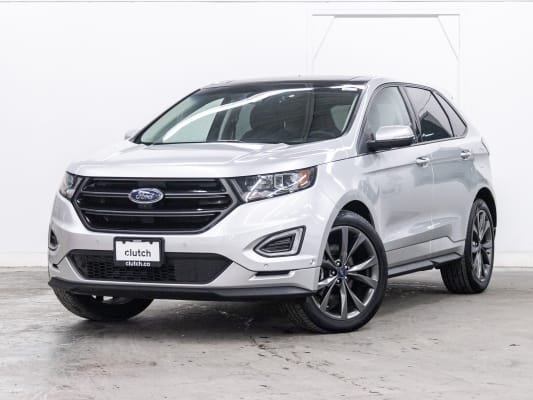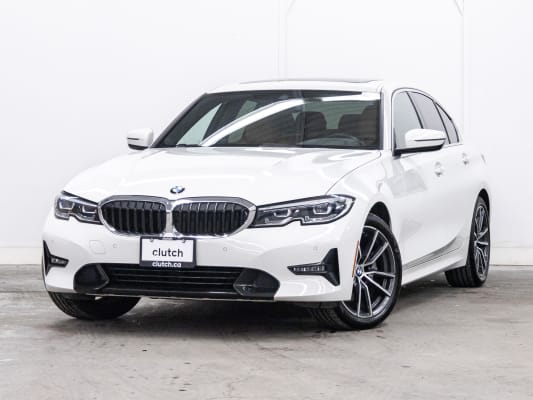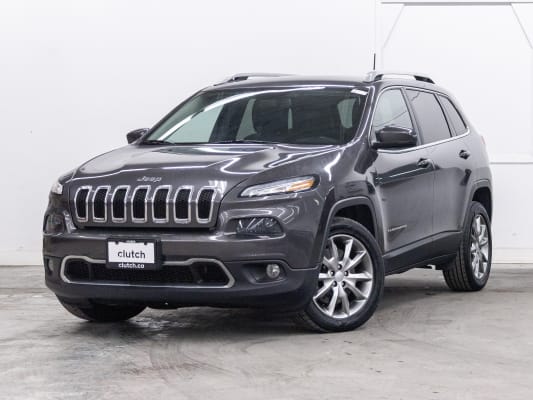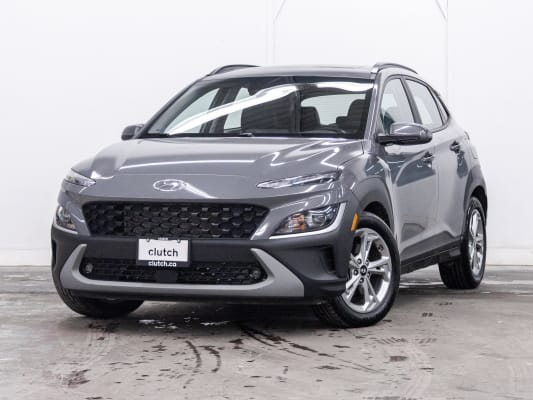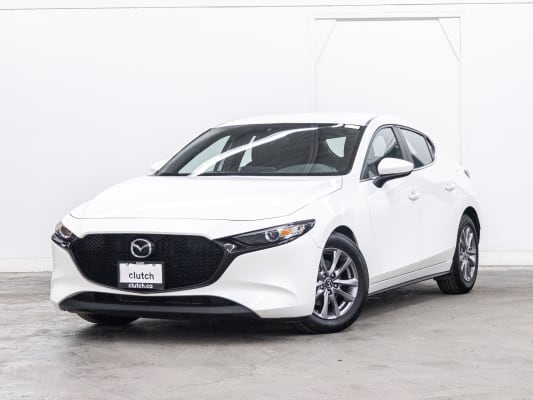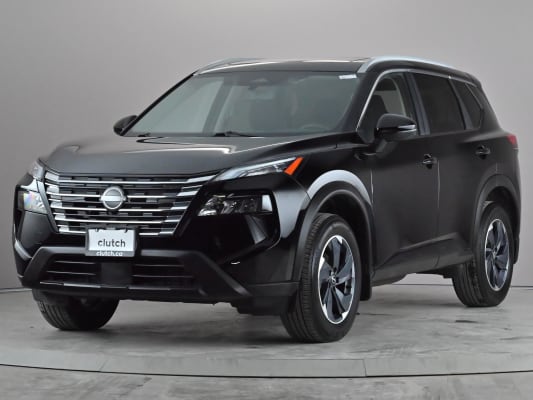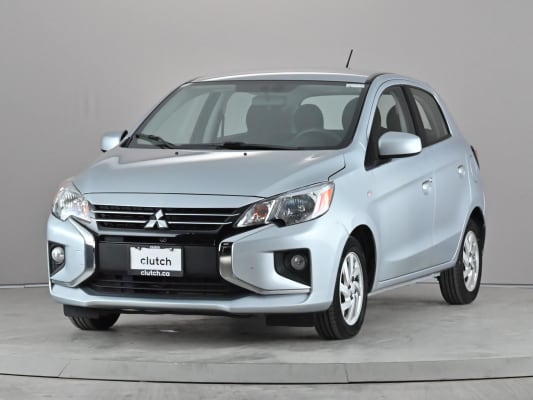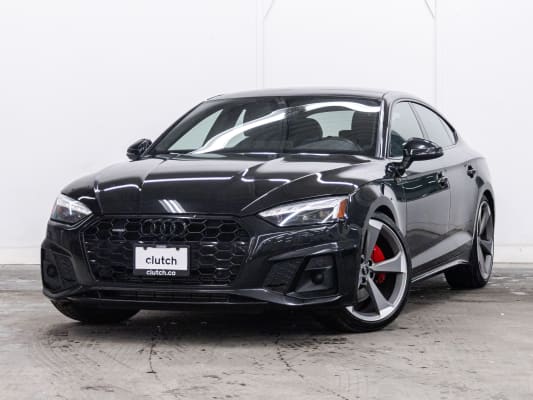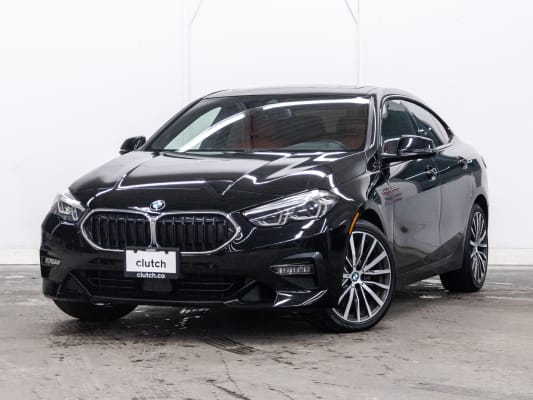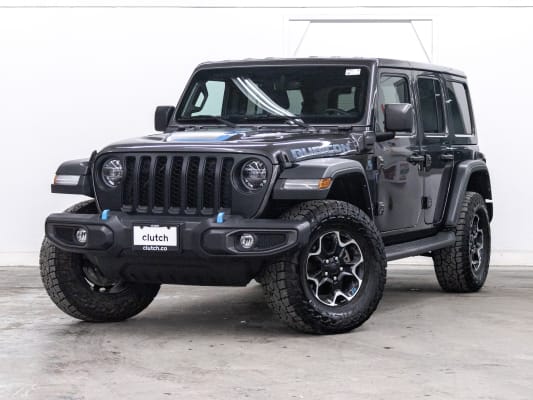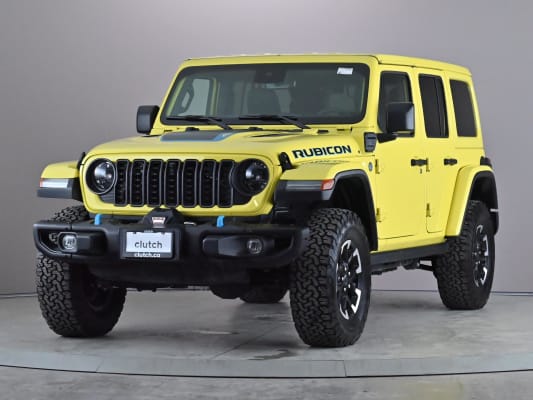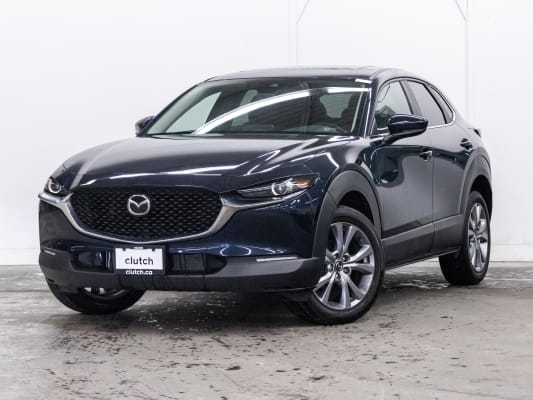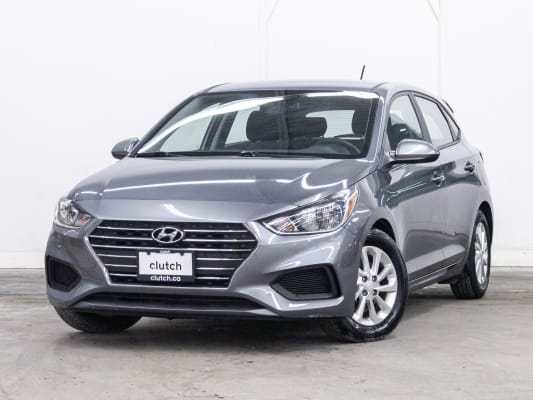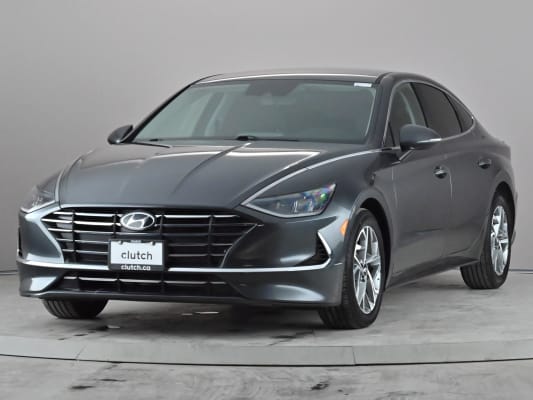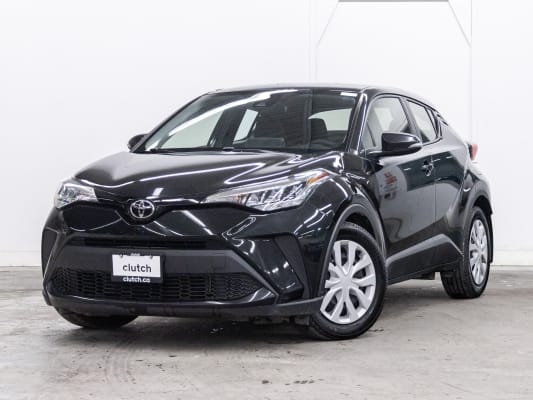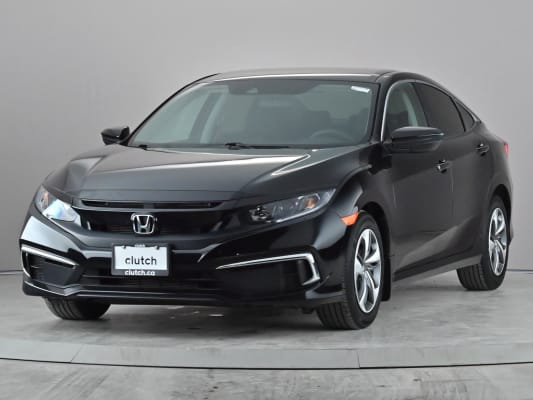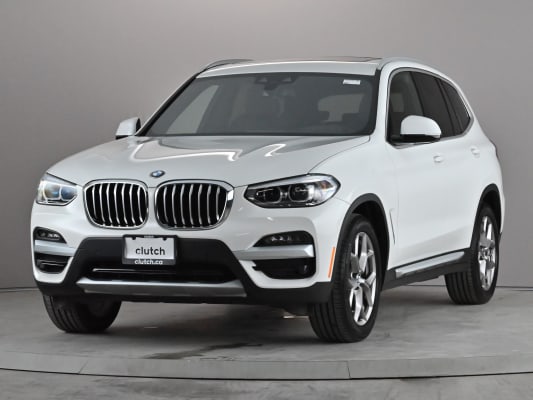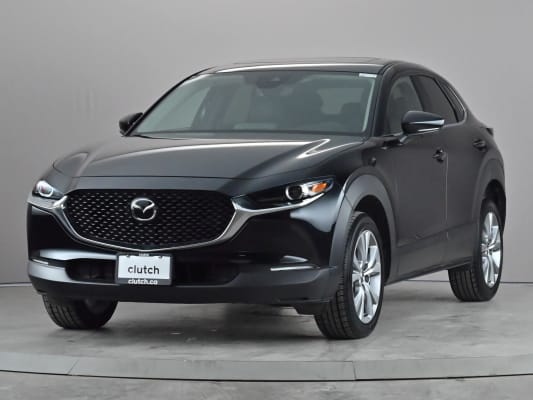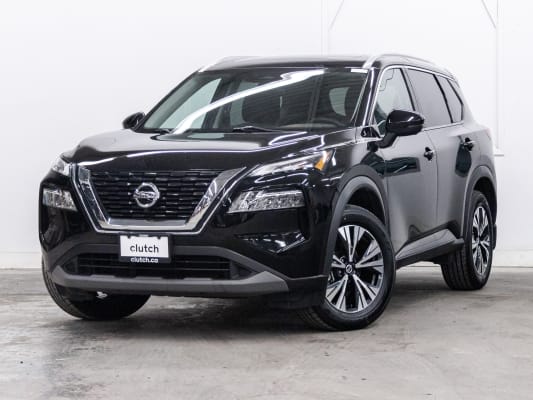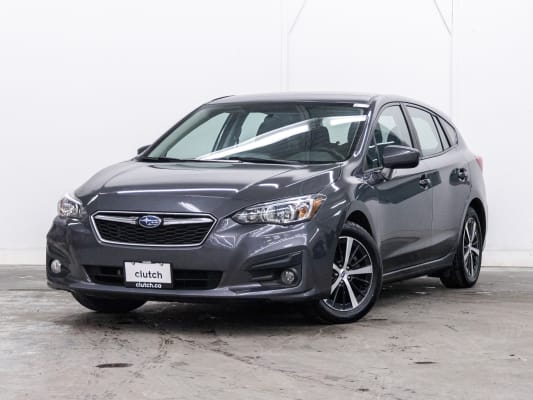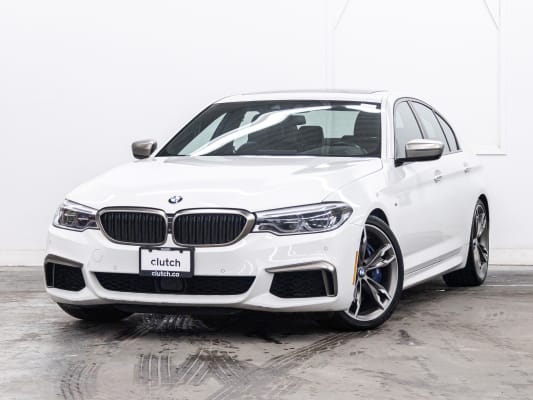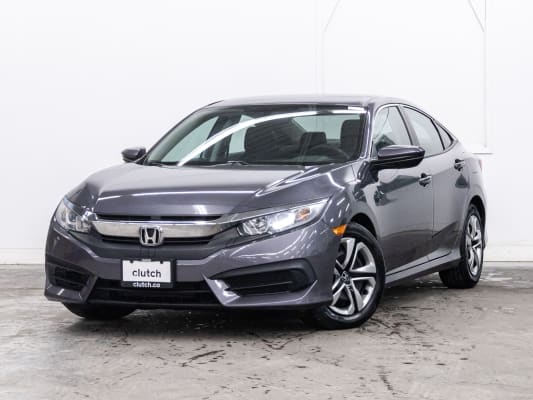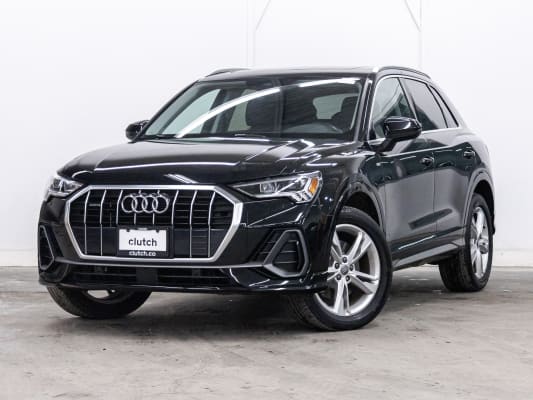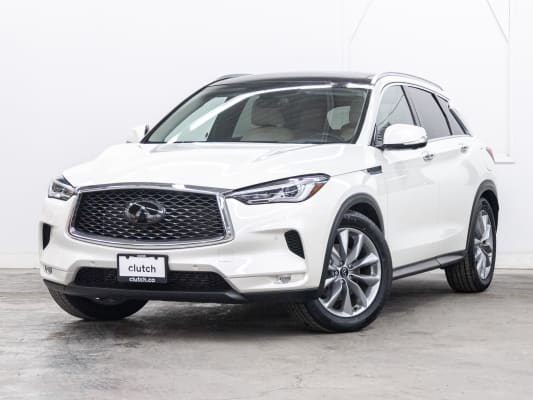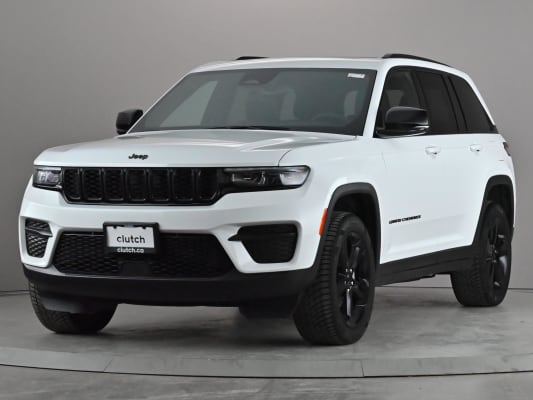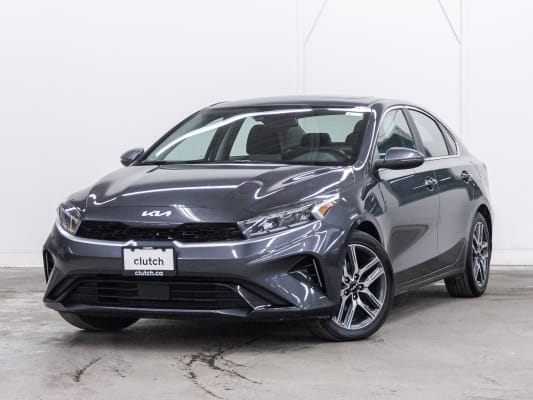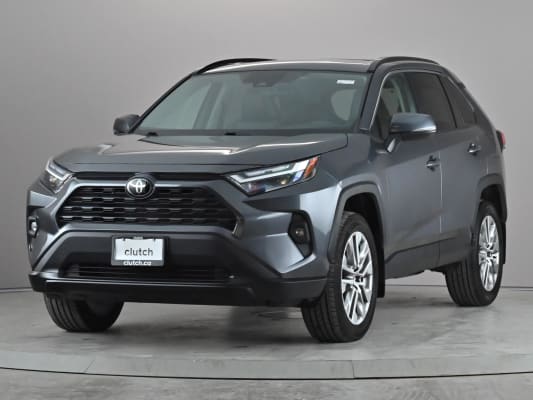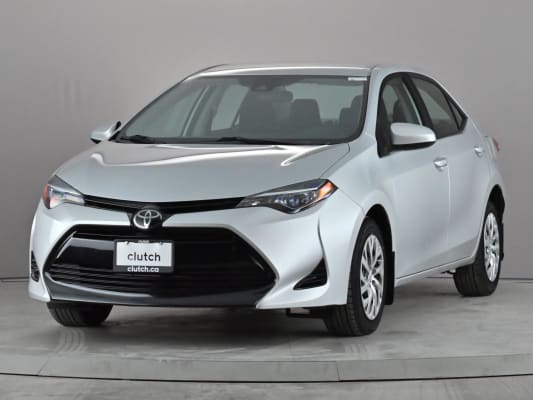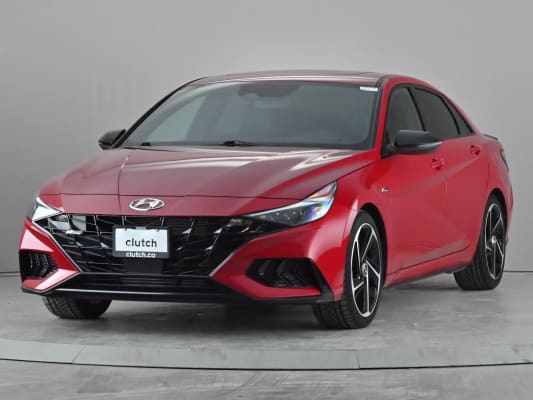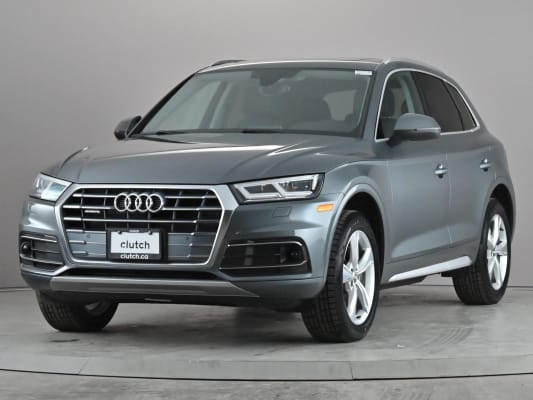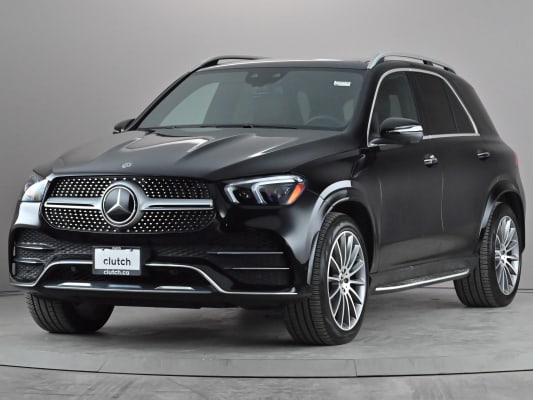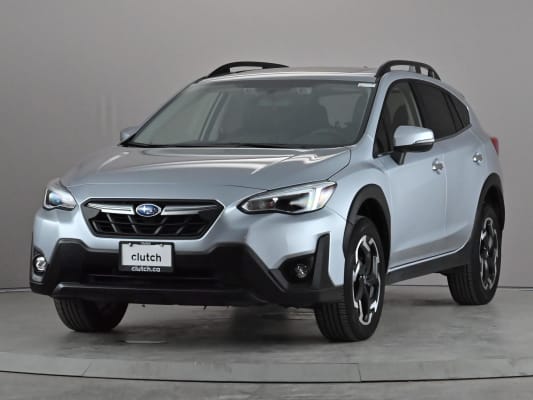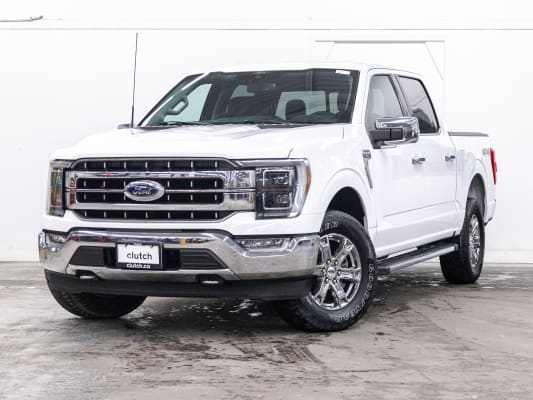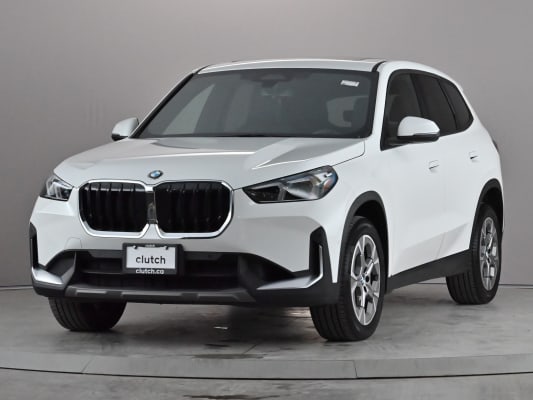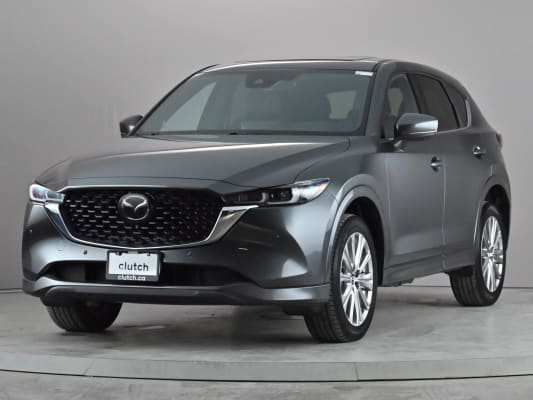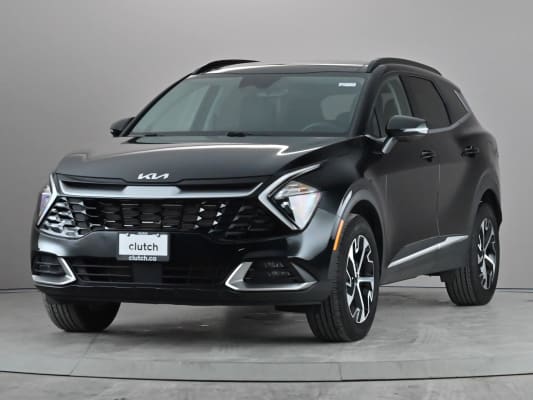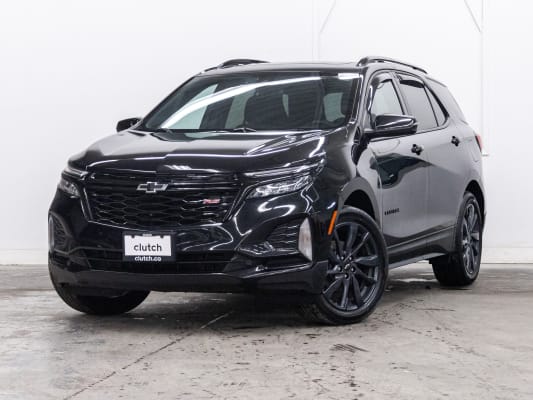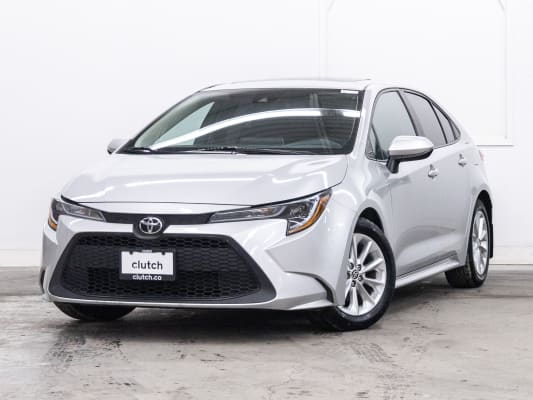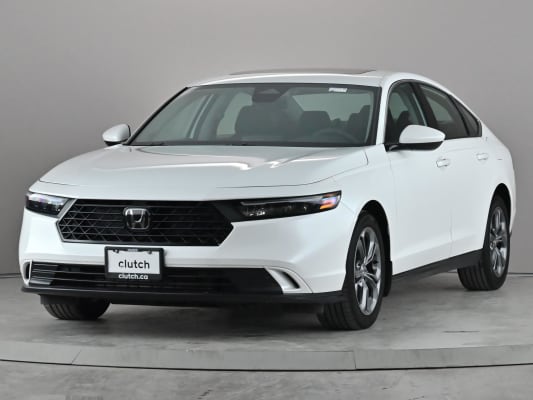All-wheel drive (AWD) and four-wheel drive (4WD) are two drivetrain types that you'll often see as options from most automotive manufacturers. But what's the real story behind these terms?
Both AWD and 4WD give you a better grip and more traction than two-wheel drive, but they're not exactly the same. Whether you're planning to conquer the off-road paths in Ontario's Bruce Peninsula National Park or keep a steady hand in the face of snow or slippery roads, here's a quick guide to AWD vs. 4WD.

What are the differences between AWD vs. 4WD?
For many folks who aren't mechanics, AWD and 4WD can be a bit of a head-scratcher. So, if you're in the market for a new ride or just curious about these drivetrains, it's important to first get a handle on what they mean and how they're different. Here's a simple rundown of the key differences between AWD and 4WD.
All-Wheel Drive Explained
Without getting into technical jargon, the basic difference between AWD and 4WD systems is how they distribute power or torque to each wheel. In AWD vehicles — which can be cars, trucks, or SUVs — the onboard computer directs power to the front axle or rear axle under normal driving conditions.
When the vehicle senses a slip or lack of traction due to bad weather or adverse road conditions, it automatically redirects power through a centre differential (that's a fancy term for a gear that lets wheels spin independently or at different speeds) to the other wheels. This means you don't have to worry about a thing, as the system is always on the job. This always-on feature is also known as full-time all-wheel drive.
Four-Wheel Drive Explained
Four-wheel drive systems work in a similar way to AWD but with a few key differences when it comes to traction and driver control. Most 4WD systems come with a switch that lets the driver choose between two-wheel drive mode or four-wheel drive based on road conditions. This switch might also have options for low-range and high-range gears, which are crucial for tackling rough terrain or off-roading.
When four-wheel drive is turned on, the vehicle uses a transfer case to distribute torque to both the front and rear axle. This lets both axles spin at different speeds, leading to a big boost in off-road performance.
Unlike AWD vehicles, 4WD is typically found only in trucks and SUVs.
In search of the top off-road vehicles on the market? Check out our list of the best 4x4 SUVs in Canada.
.avif)
A Quick Note on Two-Wheel Drive Vehicles
If you’re interested in the differences between 4WD and AWD, you've likely come across two-wheel drive (2WD). Two-wheel drive is another drivetrain type that's standard in most cars, and you'll also find it in some trucks and SUVs. However, 2WD splits into two categories: front-wheel drive (FWD) and rear-wheel drive (RWD).
Front-wheel drive is a drivetrain that channels the engine's power to spin just the front axle. This setup is a staple in many everyday vehicles. On the flip side, rear-wheel drive takes the engine's power to spin the rear axle. This drivetrain is the go-to for nearly all trucks and SUVs, and it's also a favourite for most sports cars.

Feeling a Bit Lost?
If all this is making your head spin, don't worry. Car manufacturers often use these terms interchangeably, which can add to the confusion. But here's the key takeaway:
In AWD vehicles, the system is always on, giving you better traction and handling no matter what the road throws at you.
In 4WD vehicles, you're in control. You decide when to turn on the system for maximum traction. Remember, 4WD is usually reserved for tough driving conditions, and it's not something you'd typically use on regular roads — unless you're caught in a snowstorm.
AWD vs. 4WD: When and Where to Use it
Picking between AWD and 4WD might seem like a tough call, but it really depends on how and where you drive.
Choose AWD if you…
- Commute daily in mixed weather – AWD is perfect for handling rain, slush, and snow without any input from the driver. Ideal for navigating Ontario’s wintry roads or rainy Vancouver commutes.
- Mostly drive on paved roads – AWD vehicles offer added grip during poor conditions but still maintain comfort and fuel efficiency for urban or highway driving.
- Don’t want to think about it – AWD is “set it and forget it.” The system works automatically and adjusts power as needed, giving you peace of mind with no extra buttons to press.
Choose 4WD if you…
- Drive off-road or in rural areas – 4WD is the go-to for gravel, mud, and unmaintained backroads. Great for adventures in places like Algonquin Park, cottage country, or the Rockies.
- Need serious traction – Whether you’re towing, hauling, or climbing steep hills in icy conditions, 4WD offers better torque and control when you need it most.
- Want manual control – With selectable drive modes (2WD, 4WD High, 4WD Low), you can match traction to the terrain—especially useful when conditions change quickly.
The Pros and Cons of AWD vs. 4WD
Let's dig into the details of both all-wheel drive and four-wheel drive vehicles. To some extent, picking the drivetrain that suits you is a matter of personal preference. But it's also a good idea to weigh the pros and cons of each. This will help you make the best choice for your driving habits.
.avif)
.avif)
.avif)
.avif)
Do You Really Need AWD or 4WD?
That’s the million-dollar question — and the answer depends on where and how you drive.
If you live in a region of Canada with harsh winters or unpredictable weather, AWD can offer peace of mind and extra safety. But for drivers in milder climates or mostly urban areas, a 2WD vehicle might do the trick just fine.
Why consider 2WD? Over the past decade, modern 2WD vehicles have come a long way. Most now come standard with traction control, electronic stability control, and other advanced safety features. While they don’t provide the same grip as AWD or 4WD, these systems offer plenty of stability for everyday commuting and regular road conditions.
What About Cost?
AWD and 4WD systems add capability — but also cost. Vehicles with these drivetrains typically come with a price tag that’s $2,000 to $4,000 higher than their 2WD counterparts, whether new or used. That’s a significant premium if you don’t actually need the extra traction.
There’s also the long-term cost to consider. AWD and 4WD systems are more complex, which can mean higher maintenance and repair bills. And in the event of a flat tire, you may need to replace all four tires (AWD) or both tires on the same axle (4WD) to avoid drivetrain damage — even if only one is worn out. Most manufacturers specify that tire tread differences can’t exceed 3/32 of an inch to avoid costly repairs.

What Type of Drivetrain Suits Your Driving Style?
With added traction and peace of mind, many buyers opt for AWD or 4WD without a second thought. Yet the answer will inevitably vary depending on your driving style.
The good news is that you have the option for two-wheel drive, four-wheel drive, or all-wheel drive on almost every type of vehicle. So whether you want a crossover, pickup truck, sedan, or full-size SUV, you'll typically have an option between drivetrains.
Some manufacturers, such as Subaru, make all of their vehicles with standard AWD, while others such as Nissan, Chevrolet, and Toyota offer AWD or 4WD as an option. Luxury manufacturers also have their own proprietary AWD systems, such as Quattro from Audi, xDrive from BMW, or 4MATIC from Mercedes-Benz. And you always have the option of a trusted, proven system such as the 4WD found in the Jeep Wrangler.
Choosing between AWD, 4WD, and 2WD vehicles isn't always easy. That's where Clutch comes in.
Whether you’re looking for extra confidence in the snow or a vehicle that can handle weekend adventures, Clutch has a wide range of AWD and 4WD vehicles to match your lifestyle.
Plus, we offer a 10-day money-back guarantee, a complimentary 3-month / 6,000 km warranty, and a 210-point inspection on each vehicle.
The entire process is 100% online — from browsing to delivery, and even financing. No dealership visits. No pressure.
No matter what type of drivetrain you choose, you’ll find high-quality and competitively-priced options at Clutch.
FAQs About AWD vs 4WD
What’s the main difference between AWD and 4WD?
AWD (All-Wheel Drive) is typically always active and automatically adjusts power between wheels for better traction on various road conditions. 4WD (Four-Wheel Drive) usually requires manual activation and is designed for off-road or rugged terrain, offering more control in challenging conditions.
Is AWD better than 4WD for winter driving?
AWD is generally better for day-to-day winter driving because it operates automatically and adapts to changing conditions like snow or ice. 4WD is better for deep snow or unplowed roads but isn’t ideal for dry pavement due to potential drivetrain stress.
Is AWD or 4WD more expensive to maintain?
Both systems are more complex than 2WD and can lead to higher maintenance and repair costs. AWD systems may require all four tires to be replaced at once, while 4WD components like the transfer case may need more attention over time.
Do all SUVs come with AWD or 4WD?
Not necessarily. Many SUVs offer AWD or 4WD as optional features. Some models come standard with front-wheel drive (FWD) or rear-wheel drive (RWD), so it’s important to check the specific trim or configuration.
Does AWD or 4WD use more fuel?
Yes, both AWD and 4WD systems typically result in lower fuel efficiency compared to 2WD because they add weight and increase drivetrain resistance.
Can I turn off AWD or 4WD?
AWD systems are usually always on and can’t be turned off. Most 4WD systems allow you to switch between 2WD and 4WD manually, and some also include low-range gearing for extreme terrain.




_Article.avif)


_Thumbnail.avif)


